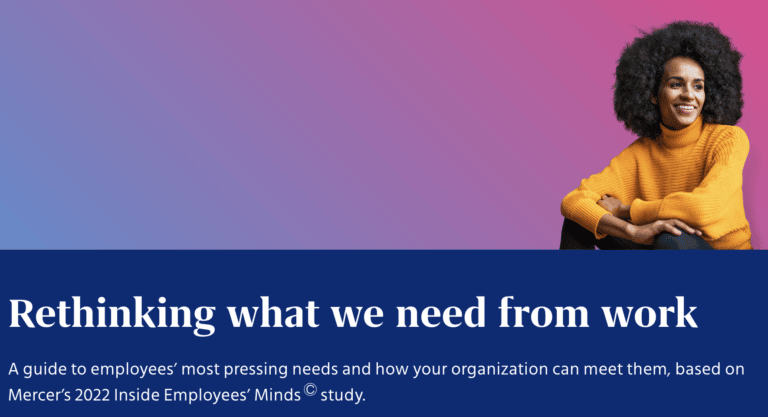
Infographic: Healthcare Affordability Survey
Paying for It: How Health Care Costs and Medical Debt Are Making Americans Sicker and Poorer Findings from the Commonwealth Fund 2023 Health Care Affordability Survey

Paying for It: How Health Care Costs and Medical Debt Are Making Americans Sicker and Poorer Findings from the Commonwealth Fund 2023 Health Care Affordability Survey

In an era where employee financial security is paramount, employers are increasingly deploying a spectrum of innovative financial wellness programs, including financial and debt counseling, lifestyle spending accounts and contributions to emergency savings accounts alongside traditional financial benefits like 401(k)s or Health Savings Accounts (HSAs) to bolster their workforce’s financial well-being.

Access to Cash and Healthcare Spending Research by the JPMorgan Chase Institute sheds light on a critical aspect of healthcare spending in the United States – deferred care.

Health insurance is an important financial safety net, but it doesn’t cover everything. There are several out-of-pocket costs that you may be responsible for, even if you have health insurance. These costs can include deductibles, copays, coinsurance, and out-of-network services. In addition, health insurance may not cover all the medical care that you need.

The 2023 Employee Benefit Research Institute (EBRI) survey highlights the increasing value of financial wellbeing programs in the workplace. As an employer, if you’re contemplating integrating a program like medZERO, a service that offers employees a spending account specifically for healthcare expenses, here are five compelling reasons drawn from the survey’s insights:

Introduction In 2023, the Commonwealth Fund conducted an extensive survey shedding light on the financial burdens that many Americans face when it comes to healthcare expenses. The report, titled “Paying for It: The Costs of Debt Leave Americans Sicker and Poorer – 2023 Affordability Survey,” (released October 2023) reveals the stark reality of healthcare affordability in the United States. In this blog post, we’ll provide a summary of the key findings and implications of this survey.

As an employer, you understand the importance of providing your employees with good healthcare benefits. You likely invest a significant amount of money into these benefits, including coverage for medical care, dental, vision, medications, and preventive care. Despite these efforts, your employees may still face high out-of-pocket costs for medical care, which can lead to financial stress and impact their satisfaction and retention. It’s important to be empathetic and understand that even the best healthcare benefits may not cover all costs, and employees may still need help paying for medical expenses.

In today’s job market, employers are always looking for new ways to attract and retain top talent. One strategy is to offer a range of benefits that can help employees manage their finances and improve their overall quality of life. Two popular benefits in this area are medZERO and a lifestyle spending account (LSA). In this article, we’ll explore the advantages of each benefit and explain why medZERO may be a better choice for employers looking to support their employees’ healthcare needs.

Midvale, Utah–based Savage is a privately held, global provider of industry infrastructure and supply chain services for industries including agriculture, energy, chemicals, and manufacturing. The company has about 4,000 employees across more than 200 locations.

medZERO Insights. Mercer published an update to its “Inside Employees’ Minds” study which focuses on understanding the root causes of high turnover and how employees’ needs and wants have shifted over the past year

Portland, OR USA – medZERO, a leading provider focused on increasing benefits accessibility and affordability, is pleased to announce its strategic partnership with Sortis, a nationwide consortium of original, founder-led hospitality and lifestyle companies known for its iconic brands in hospitality, lodging, restaurants, coffee, and health and beauty sectors, including Bamboo Sushi, Cicoria, Sizzle Pie, Fellow Barber, and Rudy’s Barbershop.

Portland, OR USA – medZERO, a leading healthcare financial wellness company and provider of on-demand, interest-free funds to employees to pay for out-of-pocket health costs, today announced that LoanPro has launched medZERO’s health financial wellness platform for their employees.

PORTLAND, Ore.–(BUSINESS WIRE)–medZERO, a leading provider of healthcare financial wellness solutions, is excited to announce its transformative AI-based strategy. This strategy will empower employees throughout their entire healthcare journey with paramount focus on financial wellness. By integrating the complex financial aspects of healthcare decision-making with AI, medZERO is revolutionizing the way individuals engage with their care. This ensures both their physical well-being and financial security.

PORTLAND, Ore.–(BUSINESS WIRE)–medZERO, a leading healthcare financial wellness company and provider of on-demand, interest-free funds to employees to pay for out-of-pocket health costs, has responded to the report issued today by the Consumer Financial Protection Bureau (CFPB) on the risks associated with medical credit cards and financing plans.
PORTLAND, Ore.–(BUSINESS WIRE)–medZERO, a leading healthcare financial wellness company and provider of on-demand, interest-free funds to employees to pay for out-of-pocket health costs, has announced the release of a new version of its app. This latest version includes enhanced usability features, curated content for employees, and direct connectivity to payroll systems.

For more than five years, Laurel Timmins has helped guide growth at Savage, a global provider of supply chain infrastructure and services based in Midvale, Utah. It’s diverse growth, too. For instance, Savage has helped increase the number of women in leadership while the number of women driving its trucks has grown by 20 percent.

PORTLAND, Ore. — medZERO, a fintech company that enables on-demand, automatic, interest-free payment for out-of-pocket healthcare expenses, has added six health and benefits business leaders to their advisory board. These professionals will consult on company and product strategy and will assist in making valuable connections to expand access to medZERO.

PORTLAND, Ore.– Savage is one of the most recent companies to offer medZERO’s innovative benefit to its more than 4,000 Team Members.

LG Electronics’ North American Innovation Center (LG NOVA) picked medZERO as one of the “Selected 20” startups advancing to the next stage of its Mission for the Future global challenge competition. The honor comes with $100,000 to help fund a collaboration for the next round of the competition.

medZERO was one of five companies selected by the Meta Lab challenge last month, a prestigious competition sponsored by the Carolina Fintech Hub and MassChallenge.